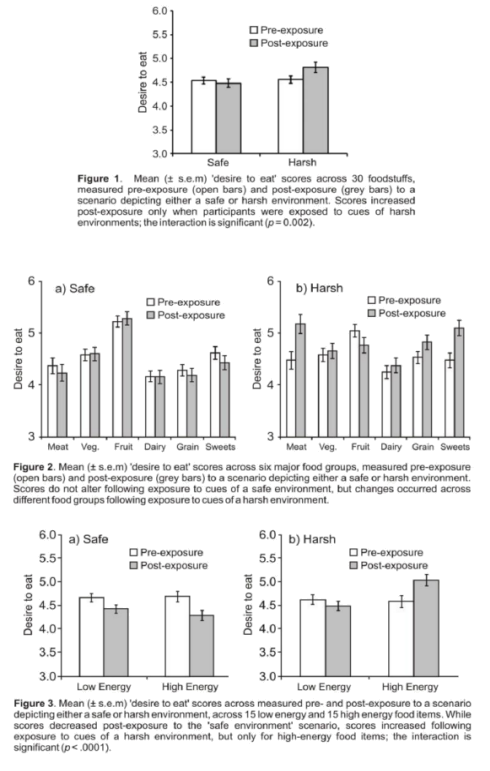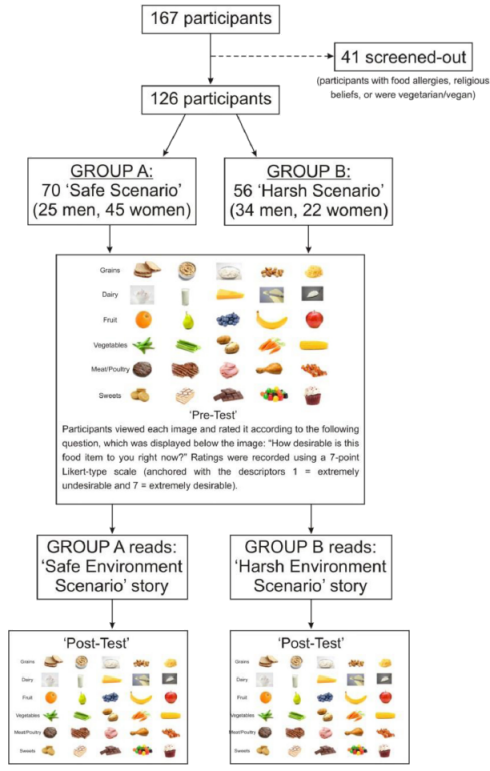Exposure to Cues of Harsh or Safe Environmental Conditions Alters Food Preferences
Jim Swaffielda ★, S. Craig Robertsb
Alberta School of Business, University of Alberta, Edmonton, Alberta, T6G 2R6, Canada
School of Natural Sciences, University of Stirling, Stirling, FK9 4LA, UK
(★Corresponding author: Jim Swaffield; email: jbs@ualberta.ca)


Introduction
In humans, psychological stress is positively correlated with an increased desire for certain energy-dense food items, indicating that stress may trigger foraging behavior that adapts to perceived current and future resource availability. However, the extent to which such processes influence desire for different kinds of foods remains unclear. Here we examine the effects of perceived environmental conditions (safe versus harsh) on food preferences across the food spectrum of dairy, meats, vegetables, fruits, grains, and sweets.
Based on previous research (Laran & Salerno, 2013), we hypothesize that cues of environmental harshness would trigger changes that might reflect changing strategies in consumptive behavior. This could happen in two ways: (i) cues of environmental harshness might increase appetite generally, such that desire for both low and high energy food increases following exposure to cues of harshness, or (ii) cues of environmental harshness may trigger changes in motivation to eat specific kinds of food, increasing desire for high energy food types, while desire for low energy dense food would either remain unchanged or decrease.

Conclusions
Our results add to the evidence that there is a behavioral sensitivity to how people perceive their environment. Based on earlier research, we had predicted that environmental harshness would likely increase desire for energy-dense food items. However, we did not know whether this increased desire would be limited to energy-dense foods; that is, wehether desire for food would increase across food items more generally. Our results suggest that there was no significant change in desire for foods that were relatively energy-poor after exposure to the harsh environmental scenario, suggesting that the manipulation did not affect appetite generally. Thus, our results support the idea that harsh conditions increase perception of resource scarcity, which in turn triggers optimal foraging behavior such that attention is specifically directed towards high calorific/high-motivation foods.
In addition , our data revealed two further interesting results. First, analyses using food item as the unit of analysis showed that, in contrast to the positive correlation between calorific value and increased desirability ratings of high-calorie food items in the harsh environment condition, there was an inverse relationship in the safe environment conditi on. This may suggest that cues of experiencing a safe and benign environment may serve to reduce attention towards higher calorific food items. As Figure 3 shows, this response was considerably less marked compared with the increased desire precipitated by the harsh environment cues, but the effect is nonetheless of interest.
References
Laran, J . & Salerno, A. (2013). Life-history strategy, food choice, and caloric consumption. Psychological Science, 24(2), 167-173.